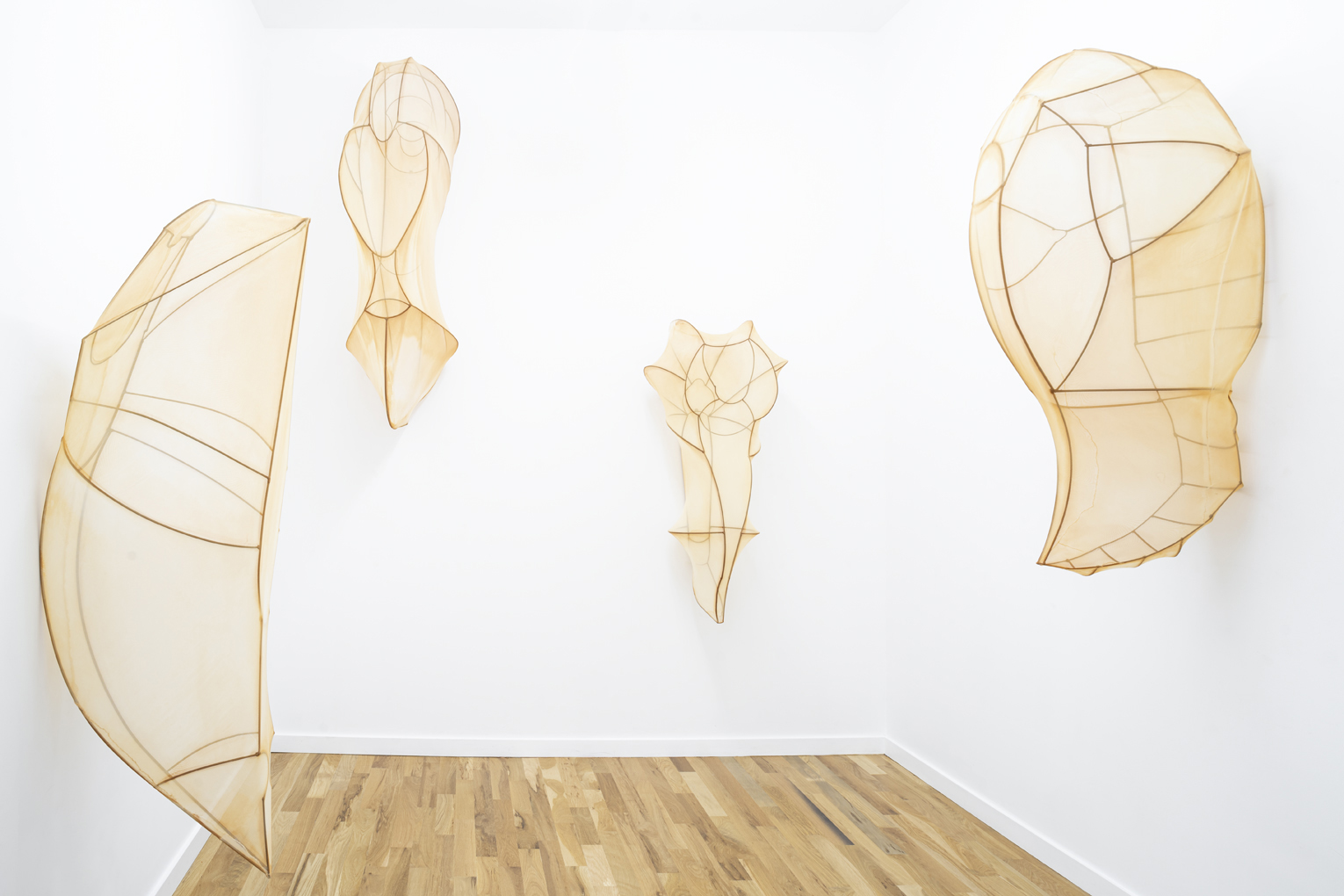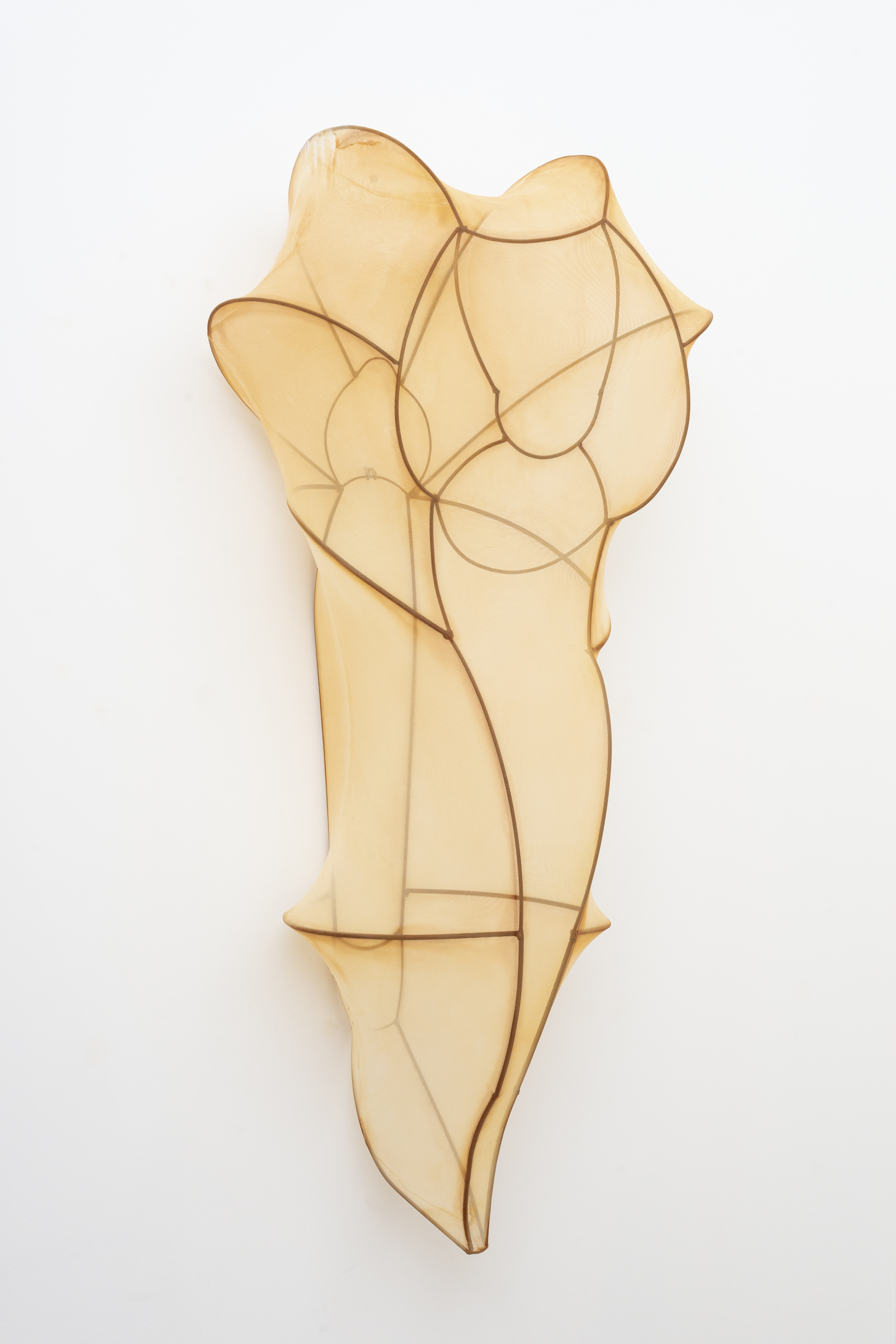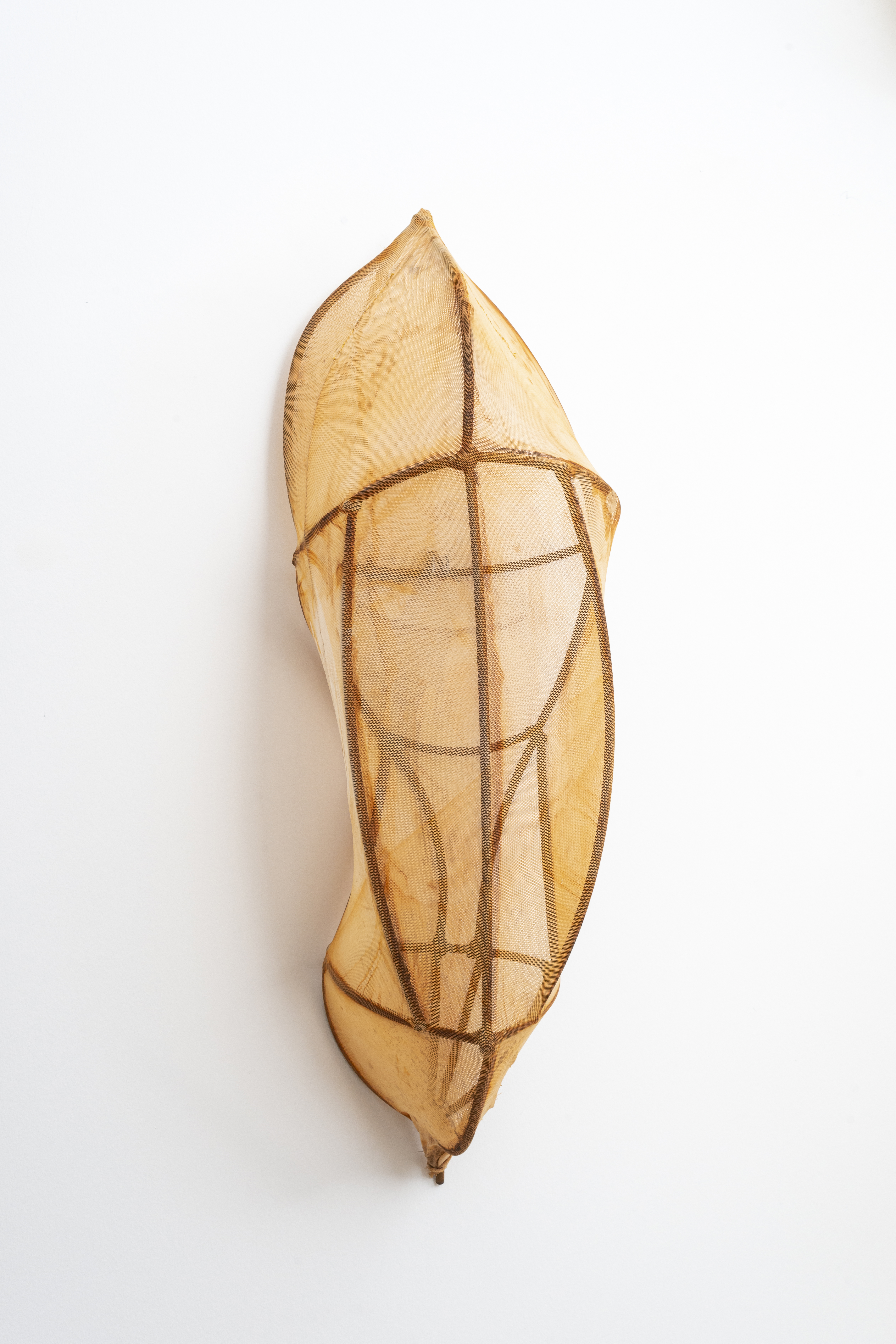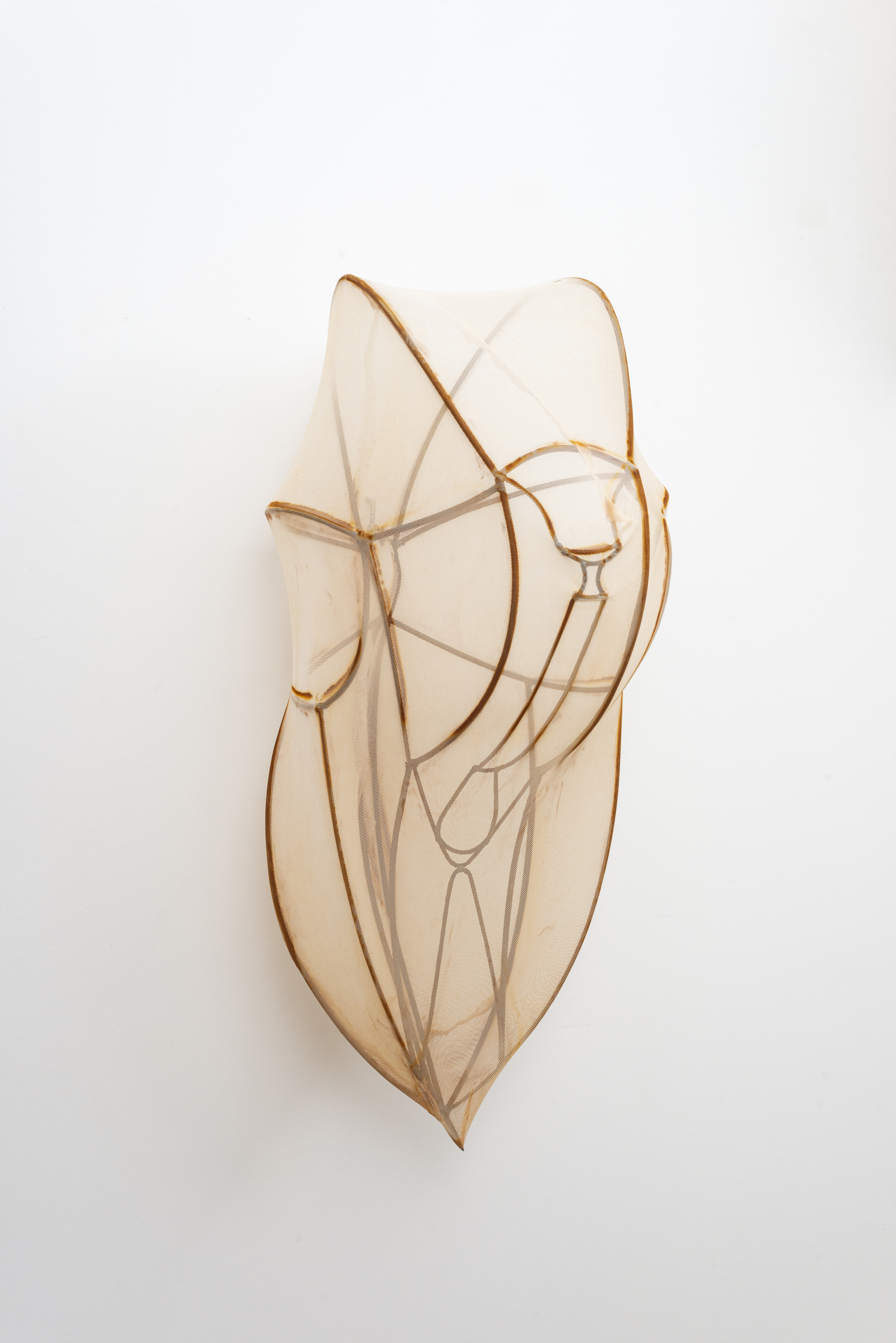EXHIBITIONS | ︎ WORK | CV | CONTACT + ABOUT | NEWS
Encyclia imagosis
2020
metal & oxidized textile
Solo Exhibition curated by Aron Gent
Paris London Hong KongChicago, IL
image credit: PLHK
2020
metal & oxidized textile
Solo Exhibition curated by Aron Gent
Paris London Hong KongChicago, IL
image credit: PLHK




The Codex Seraphinianus is an illustrated encyclopedia of an imaginary world, created by Luigi Serafini, written in a self-invented alphabet. It contains hundreds of hybrids, imaginary and strange beings: a horse transforms into a cocoon, a bird’s nest sprouts legs with yellow sneakers, lovers become a crocodile. Each undergoes metamorphosis, creatively overcoming bodily limits. Many real creatures are stranger than imagined. The caterpillar, for example, encases itself in a chrysalis into which it releases enzymes that digest its own form, liquidating its’ tissues. Only structures called imaginal discs survive, able to reorder the larval soup into a new being. Through this process of imagination, caterpillars push themselves into a different future, the confines of their chrysalis paradoxically enabling their flight forward into the unfamiliar, just as the imagination does for other species.
Encyclia Imagosis consists of four human-scale oxidizing chrysalis sculptures. They mark an evolutionary world, where objects are process and forms are dynamic patterns creating symmetries, hybrids, mutations. Through an embodied exploration of the possibilities of reorienting both personal perception and cultural convention, Encyclia Imagosis investigates various ways we make sense of the world and relate to ourselves and others through imagination, metaphor, and material.
now imagine
you’re a caterpillar
filmy eyes,
wet creased wings
slushy slop
you’re a caterpillar
filmy eyes,
wet creased wings
slushy slop







